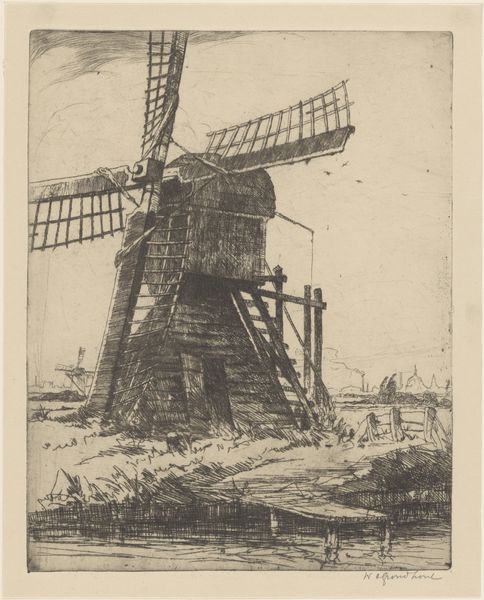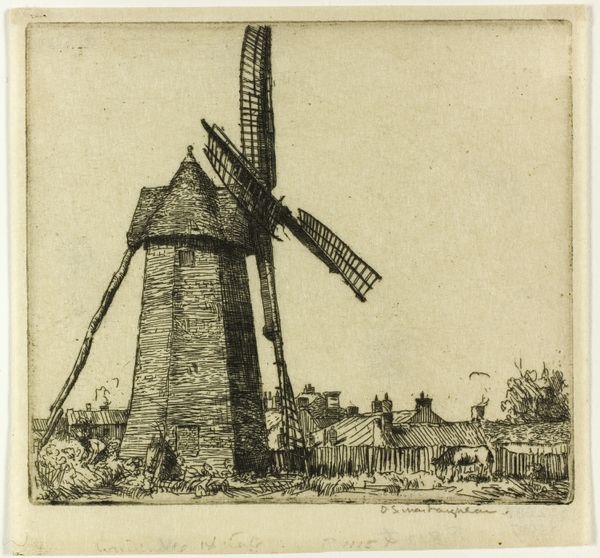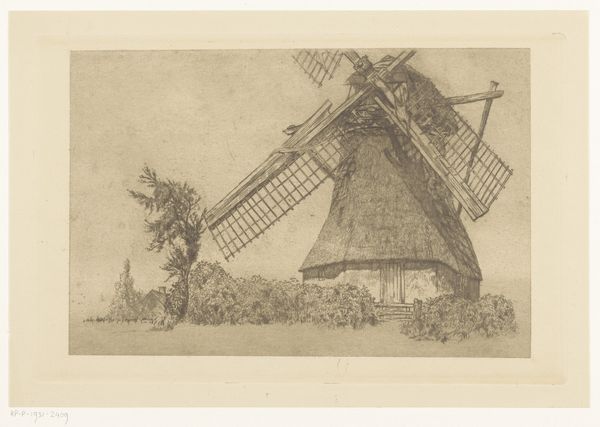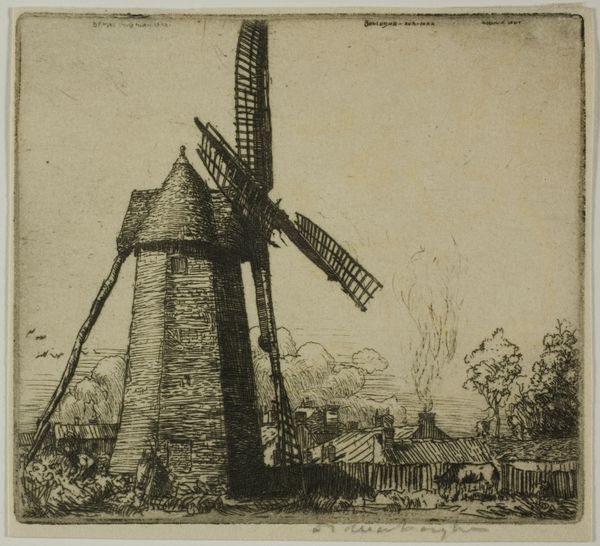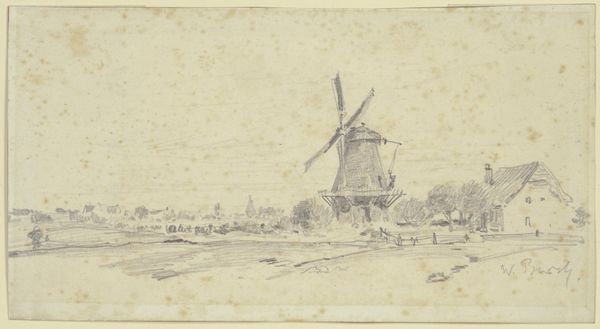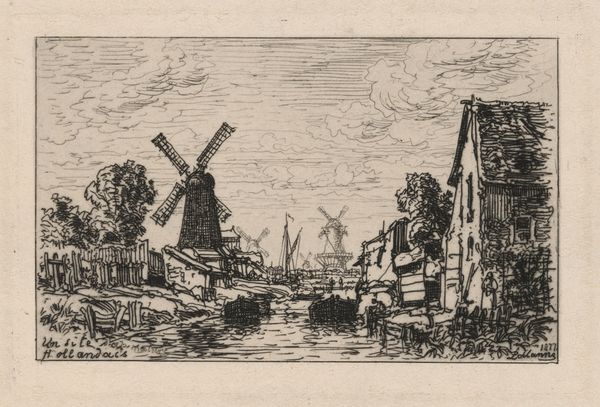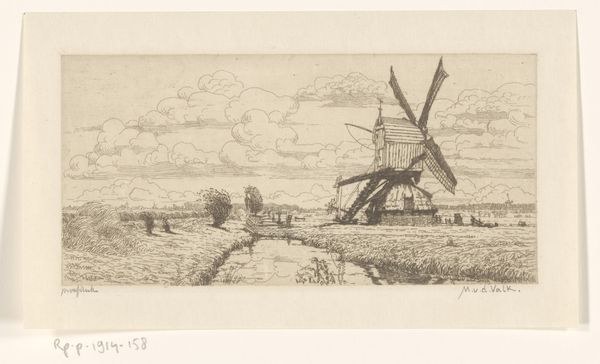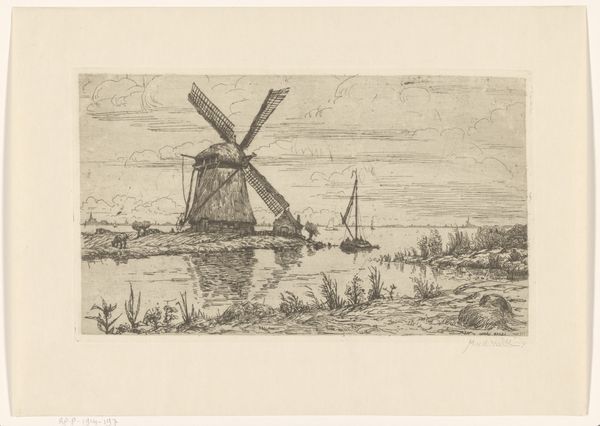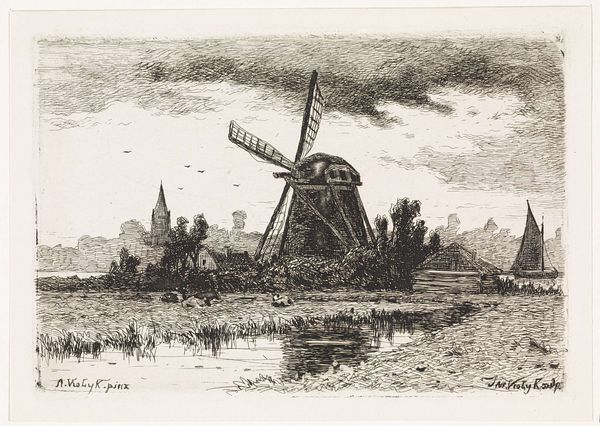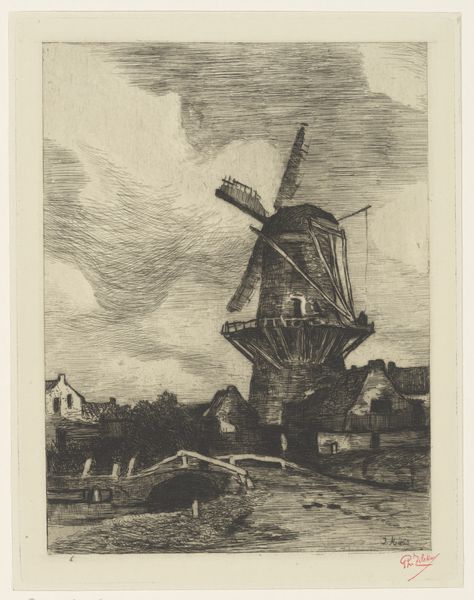
print, etching
#
dutch-golden-age
# print
#
pen sketch
#
etching
#
pencil sketch
#
landscape
#
realism
Dimensions: height 247 mm, width 378 mm
Copyright: Rijks Museum: Open Domain
Editor: So this is "Molen bij Den Haag," or "Mill near The Hague," by Willem Adrianus Grondhout, from 1915. It's an etching, isn’t it? There's such a lovely sense of light even with the limited tonal range. It feels peaceful, almost nostalgic. What do you see in this piece? Curator: I see a strategic engagement with Dutch identity. At this time, windmills were becoming less vital to the Dutch economy, a shift intensified by increasing industrialization during the early 20th century. So depicting this traditional scene serves a social purpose: a way to reclaim an idealized past during a time of great transition. What does this image communicate to a viewer about the relationship between the urban and the rural, and its accessibility? Editor: I guess I hadn't considered that windmills had that much political and social meaning. You can see the city in the background, so there's this contrast between old and new right there in the composition. So it’s a political act, this rural scene? Curator: It can be interpreted that way, especially knowing it was made in 1915, when war in Europe heightened concerns about national identity. Look how he carefully etches the details of the windmill versus the looser handling of the background. Where do you think Grondhout's priorities lie, and how does the medium influence that portrayal? Editor: Right, the windmill is very crisp, almost like a technical drawing, whereas the city fades into the background, like a memory. It makes me think about how we choose which parts of our history to hold onto, and how artists can shape those choices. Curator: Exactly! And considering its display in the Rijksmuseum today, we see how institutions perpetuate that selective vision of history. I wonder if contemporary viewers appreciate how carefully constructed that image of Dutchness truly is. Editor: That’s given me so much to think about in terms of how national identity gets formed through art. Curator: Indeed. It shows how even seemingly simple landscapes can carry complex social and political messages.
Comments
No comments
Be the first to comment and join the conversation on the ultimate creative platform.

